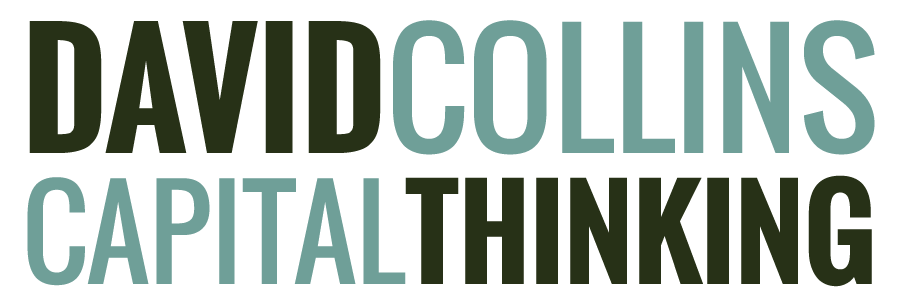Over recent weeks, changes to the history and science curriculums have been discussed. The changes fit neatly into the Critical Race Theory (CRT) narrative. While there has been criticism of the changes, the criticism has not focussed on how the changes dovetail to CRT. Of course, most of the criticism, if not all of it comes from the centre right, whilst all the support comes from the left.
It is only natural to assume that the new left support the new curriculums because they are in effect promoters of CRT. It is a fundamental edict of the new left to promote and support CRT theories. As per my last article, CRT can be defined as follows:
“CRT can be defined as an ideology that is founded on the belief that the fundamental organising principle of society is racism, which has been created by white people for the benefit of white people. For this reason, CRT contends America is “institutionally racist,” interprets any disparity in outcomes between different groups as evidence of this “institutional” or “structural” racism, and argues that minority groups, which are forever being harmed by “microaggressions” and biases within this system, must be given preferential treatment over the majority to compensate for this racism.”*1
In reviewing the history curriculum, Professor Paul Moon states in his article the following:
“There is much in the new history curriculum that addresses the current deficit in how we see ourselves, but to an extent, the positives are undermined by some inexplicable failures. The first of these is the content selection. At some point, it seems that the impossibility of addressing everything in a curriculum became a pretext for making some deleterious decisions on topic choice. The omissions range from puzzling to worrying. Women’s history, the emergence of the welfare state, the role of wāhine Māori in our history, economic history, labour relations, the history of our role in the international realm, and popular culture history have all effectively been erased. More troubling still, the curriculum designers were notified of the importance of these topics in a submission, and yet failed to remedy the content.”*2
In his paper, Professor Moon alludes to the concept of CRT when he writes:
“Most critics of the curriculum have focussed on its deficient content range. However, possibly more disturbing in terms of the discipline of history is the way in which the curriculum contains distinct ideological elements. When prising open the past for examination, like any operation, hygiene is crucial. In the case of history, this involves (among much else) maintaining an evidence-based approach, evaluating the relative values of types of evidence, and avoiding as much as possible the risk that the analysis will be infected with biases. Of course, no history is completely bias-free, but this is not a reason to allow blatantly subjective positions to contaminate our understanding of the past.
“Cultural appropriation is one area where the curriculum-writers have jumped the fence from being educators to ideologues. The term ‘cultural appropriation’ is itself loaded and contested.”*3
In her open letter to Prime Minister Hipkins (who was the minister for education when the new curriculum was designed), Professor Elizabeth Rata is more forthright in her assertions:
“Since the 1877 Education Act, the purpose of education has been to build our nation upon the accumulated knowledge of humanity. The intended benefits of this universal education system are numerous. Six generations of New Zealanders are educated; a robust economy is developed; stable democracy is secured through secular institutions – all enabling the social cohesion of a multi-ethnic population with different backgrounds but united in its commitment to our nation.
“The Curriculum Refresh has abandoned this goal of unity. Instead, the democratic idea of the universal human being upon which the education system was founded is replaced with a localised system that classifies children into racialised groups with, as the Curriculum Refresh states, ‘diverse ways of being, understanding, knowing, and doing’ (Our emphasis).”*4
Professor Rata further states:
“After classifying children racially, the Curriculum Refresh embeds this identity categorisation. We are to be recognised in the education system as either Māori or not. Yet the reality is that modern individuals choose which identity matters to them, a choice informed by personalities, capacities, interests, goals, family, communities, and heritages, and likely to change during the lifespan as circumstances change. At school we share the identity of pupil and student.
In contrast, the culturalist ideology now informing education policy places our identity as an ethnic one, a view that risks perpetuating fixed racial stereotypes. More seriously, it links culture to race, a link justified by the belief that how individuals think, behave, and relate to others is pre-determined by their genetic ancestry.
This race-culture link is seen in the Kaupapa Statement that ‘Ākonga will be able to see their languages, cultures, identities, and strengths in what they learn at school’. It is a pre-modern race ideology that will destroy our modern future-oriented education system and should be seen for the revolution it is.”5
Don Brash is more brutal in his assessment of the new history curriculum. In his distinctive and simple style, he states the following:
“In the new curriculum, the impression which our children will be given is that Māori were the first inhabitants of New Zealand, that they lived more or less peacefully together until nasty British colonists arrived, that the Treaty of Waitangi created a partnership between the Māori people and the British Crown which successive New Zealand governments have violated, that British troops committed some ghastly atrocities on innocent and unarmed Māori women and children, and that taken as a whole the arrival of European colonists was a huge disadvantage to the Māori people.*6
Like all CRT dialogue, it is important to distort the truth and blame white people and their influence for the so-called supressed indigenous minority, by deliberately removing some home truths about history before the white colonisers arrived.
Don Brash illustrates this point when he writes:
“The new History curriculum will indoctrinate our children with a huge number of blatant and dangerous falsehoods. One is the impression that prior to 1840 Māori society was trucking along quite nicely, with scarcely a mention of the Musket Wars and their colossal loss of life – some estimates have the loss of Māori life in the Musket Wars just prior to the signing of the Treaty as more than double the loss of life by New Zealand in all wars from 1840 to the present day.
“And the implication of a lot of the text of the curriculum is that the arrival of British colonists was to the huge disadvantage of early Māori – and that is frankly ridiculous: the arrival of the colonists brought the rule of law (thus putting an end of inter-tribal warfare), written language, the wheel, new animals like horses, cattle and sheep, an end to slavery and cannibalism, and more.”*7
The second matter is the new science curriculum that now incorporates and states “the false claim that traditional knowledge and modern science are equivalent (mana orite).”*8
“The damage occurs in two ways. First, the interweaving of mātauranga Māori across the science curriculum forces a comparison between the two knowledge systems in ways that do justice to neither. Traditional knowledge has its own value and purpose and belongs in curriculum subjects such as social studies, geography, and literature. But it is not science and does not belong in the science curriculum.”*9
Even Richard Dawkins has criticised the new science curriculum when he wrote:
“Mātauranga Māori includes valuable tips on edible fungi, star navigation and species conservation (pity the moas were all eaten). Unfortunately, it is deeply invested in vitalism. New Zealand children will be taught the true wonder of DNA, while being simultaneously confused by the doctrine that all life throbs with a vital force conferred by the Earth Mother and the Sky Father. Origin myths are haunting and poetic, but they belong elsewhere in the curriculum. The very phrase ‘western’ science buys into the ‘relativist’ notion that evolution and big bang cosmology are just the origin myth of white western men, a narrative whose hegemony over ‘indigenous’ alternatives stem from nothing better than political power. This is pernicious nonsense. Science belongs to all humanity. It is humanity’s proud best shot at discovering the truth about the real world.
He adds:
“The true reason science is more than an origin myth is that it stands on evidence: massively documented evidence, double blind trials, peer review, quantitative predictions precisely verified in labs around the world. Science reads the billion-word DNA book of life itself. Science eradicates smallpox and polio. Science navigates to Pluto or a tiny comet. Science almost certainly saved your life. Science works.”*10
Naturally, Richard Dawkins’s criticism solicited an outrage from those in support of Matauranga Māori, and none other from Dr Tara McAllister, whose research has sought to address the under-representation of indigenous scholars in academia*11. Her response to Richard Dawkins is naturally laced with the usual criticism, with language straight out of the CRT playbook.
“It is boring, embarrassing, inaccurate and full of racist tropes.
“It is clear Richard Dawkins has no expertise on matauranga.
“Dawkins’ comments are, however, a great example of how clearly white supremacy is ingrained in Western sciences globally, and how colonising scientists continue to attempt to undermine the global resurgence of indigenous knowledge, which I incorporate into my teaching and research”*12
In Graham Adams’s article, he draws out a counter to Dr McAllister’s assertion:
“In his column, Dawkins made it clear he approves of mātauranga Māori being taught, as long as it’s not included in a science syllabus.
Regarding the seven scientists who wrote a letter to the Listener:
“In the discovery of empirical, universal truths, [mātauranga] falls far short of what we can define as science itself.”*13
Sadly, Dr Tara McAllister’s assertion that science is western science and laced with white supremacy is disingenuous to the wider aspects of science itself. Science not only belongs to western civilisation, but to the Greeks, the ancient Arab world, China, and the great works done in the Muslim world. To say science is the prerogative of white supremacy is an insult to all other cultures and western civilisation itself.
Thus, the war (and yes, that is how CRT describes it) on our history and science curriculums as being a white supremacist system that must be re-taught through the eyes of the indigenous people of New Zealand has truly begun.
*1 Matt Goodwin – Critical Race Theory is infecting Britain’s schools, page 3
*2 Prof Paul Moon – Shaping things to come: New Zealand’s new history curriculum
*3 Prof Paul Moon – Shaping things to come: New Zealand’s new history curriculum
*4 Prof Elizabeth Rate et al: Open Letter to the PM
*5 Prof Elizabeth Rate et al: Open Letter to the PM
*6 Don Brash: The New History Curriculum? It’s Crap
*7 Don Brash: The New History Curriculum? It’s Crap
*8 Prof Elizabeth Rate et al: Open Letter to the PM
*9 Prof Elizabeth Rate et al: Open Letter to the PM
*10 Richard Dawkins on science and the inclusion of Māori myths into our science curriculum.
*11 NZ Herald (9 March, 2023)
*12 NZ Herald (9 March, 2023)

